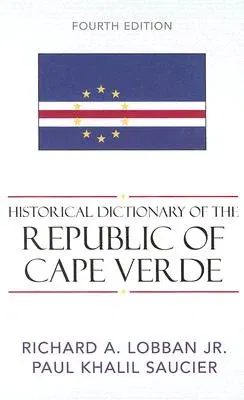The archipelago forming the Republic of Cape Verde consists of 21
islands and inlets, 9 of which are inhabited. First discovered by
Portuguese sailors around 1455, the islands were set up as a
strategically secure base for trade along the West African coast and
became stopover points for such famous navigators as Vasco Da Gama and
Christopher Columbus. This small nation achieved independence from
Portuguese rule in 1975, first as a nationalist one-party state and then
in 1991 transforming into a plural democracy. Since independence, its
growing tourism business has improved the living conditions of this once
poor and undeveloped nation into the promising up-and-coming country it
is today.
This fourth edition of Historical Dictionary of the Republic of Cape
Verde offers a comprehensive history of the country, linking the
pre-colonial and colonial past with postcolonial events. Through newly
created maps, a detailed chronology, an introduction, a bibliography,
appendixes, and hundreds of cross-referenced dictionary entries on
important political and cultural events, historical figures, places,
political organizations, and cultural groups as well as abstract
cultural, social, political, and economic topics, this valuable resource
for undergraduate and graduate students, professionals, and teachers of
African studies takes an interdisciplinary approach to providing the
most extensive and up-to-date assessment of Cape Verde history
available.

